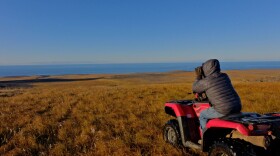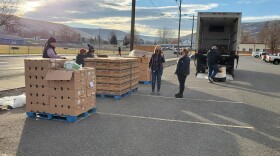-
Alaska Desk reporter Alena Naiden spoke to Our Living Lands Producer Daniel Spaulding about her reporting from Savoonga on the effort to preserve traditional ice cellars, climate change’s impact on subsistence and more.
-
Climate change has threatened subsistence practices in the Arctic. Alena Naiden reports how one village in Alaska is trying to transform reindeer herding practices into a sustainable business.
-
The Miccosukee Tribe has faced climate change on their lands in the Florida Everglades. Now they are fighting a federal immigration detention center.
-
Data centers are powering a technological boom but they also use a lot of water. Our Living Lands Producer Daniel Spaulding spoke to Kaleb Roedel about his reporting on the Pyramid Lake Paiute Tribe's concerns about a data center near their reservation.
-
A new documentary is uncovering the haunting legacy of more than 2,000 Northwest shipwrecks and their deep, complicated connections to Indigenous costal tribes like the Chinook Indian Nation.
-
Amy Bowers Cordalis is a Yurok attorney who has fought to protect her people's land, water, and way of life. Our Living Lands producer Daniel Spaulding spoke to Cordalis about her new book, The Water Remembers.
-
A new national survey by the Urban Indian Health Institute is working to reveal how widespread traumatic brain injuries are among Indigenous survivors of domestic and sexual violence.
-
Climate is impacting Indigenous communities in the Pacific. Our Living Lands Producer Daniel Spaulding spoke to Anita Hofschneider, a reporter who covers issues including sea level rise, fires and storms.
-
Picking apples to make cider is one way the Confederated Salish and Kootenai Tribes on the Flathead Indian Reservation are helping to reduce conflicts between grizzly bears and humans. The Mountain West News Bureau’s Hanna Merzbach reported on the process from Northwest Montana.
-
The ongoing federal government shutdown is putting crucial food programs – and families that rely on them – at risk.

Play Live Radio
Next Up:
0:00
0:00
Available On Air Stations











